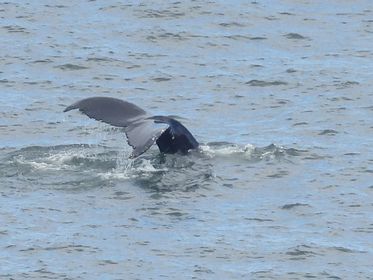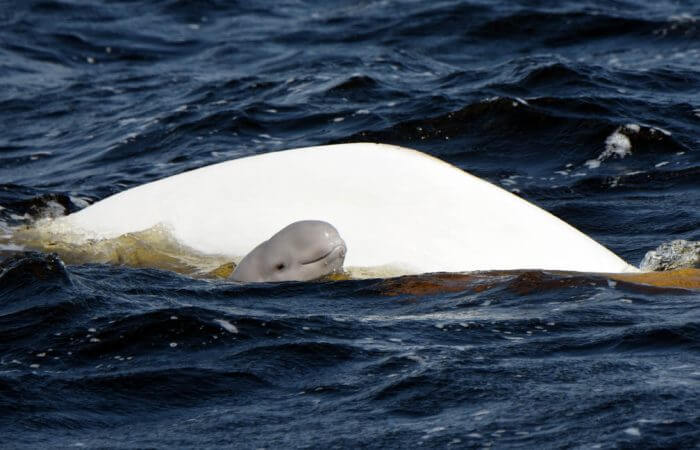From the small harbour porpoise to the titanic blue whale: the wide range of sightings offered by the St. Lawrence is not just for those who take to the sea. Whales often come close enough to shore to be observed.
Out in the Gaspé
There was action in the Gaspé this week! “Between Rivière-au-Renard and Gaspé Bay, I would estimate that there are between 40 and 60 whales – and that’s no exaggeration,” says one captain/naturalist. “In the beginning, there were minke whales and a few fins. But for the past two days, there have also been several humpbacks that have arrived. They are scattered throughout the area, but in the bay, we were treated to mediocre displays. It’s capelin season and the whales are coming very, very close to the coast.” Indeed, it is often possible to observe foraging minke whales from shore as they trap fish by cornering them against the wharves or rocks.
All along the Gaspé coast, observers gazing out to sea are delighted; breaching humpbacks near Percé Rock, minke whales near Paspébiac, two blue whales off Cap-des-Rosiers, and dozens of minke whales opposite Cloridorme. Some of the smaller cetaceans have also shown the tips of their dorsals, with harbour porpoises being seen off Grande-Grave. A whale enthusiast living in Saint-Yvon relates her extraordinary evening of June 12: “We were seeing blows nearly everywhere and almost constantly. When we stopped for dinner in the evening, we thought our weekend was coming to an end. But there were breaching humpbacks at Pointe à Mimi, in addition to 2 or 3 fin whales, harbour porpoises, and minke whales. A genuine show, and a very, very good way to kick off the season.”
First beluga calf
In the heart of the Saguenay-St. Lawrence Marine Park, herds of harp seals are on the move, harbour seals bask on the rocks along the Saguenay Fjord, and humpback whales come to breathe at the water surface. A minke whale and a fin whale were observed on June 11 at Cap de Bon-Désir in Les Bergeronnes, while a group of approximately 30 to 40 belugas have been regularly going up and down the Saguenay and observed from Tadoussac.
What caught our attention in the estuary this week is the observation by naturalist and wildlife photographer Renaud Pintiaux of the first beluga calf of the year in the St. Lawrence! “Newborns are recognizable by their soft tail, fetal folds, a ‘black-and-blue’ eye and a swimming behaviour that is typical of calves,” explains GREMM’s scientific director Robert Michaud. “It’s early in the season for a first birth, but it remains within the expected limits for this population.”
Storms, mist and spouts
At Anse au Sac in Saint-Irénée, a passionate resident observes belugas. “We saw a number of animals under the coal-grey sky, just ahead of the approaching storm. There was a rainbow as they passed by; it was beautiful.” Seemingly undistracted by the storm, the white whales continue on their way. A little farther east, travellers passing through Cap-à-l’Aigle in La Malbaie are greeted by morning fog as they enjoy their breakfast on the water’s edge. Nevertheless, a minke whale near shore emerges beneath the shroud. On the opposite shore, at the docks in Rivière-Ouelle, belugas can be seen regularly, but local residents are surprised to observe a baleen species for the first time in their region on June 12: a minke whale!
Off Pointe-Lebel, opposite Pointe Paradis, minke whales are still present and the breath of a large whale was spotted in the distance. Given the rounded shape of the spout, it was probably a humpback. In Gallix, a few large blasts blur the horizon, while in the Mingan Archipelago region, a few minke whales are observed, not to mention hundreds of grey seals and about fifty harp seals.








